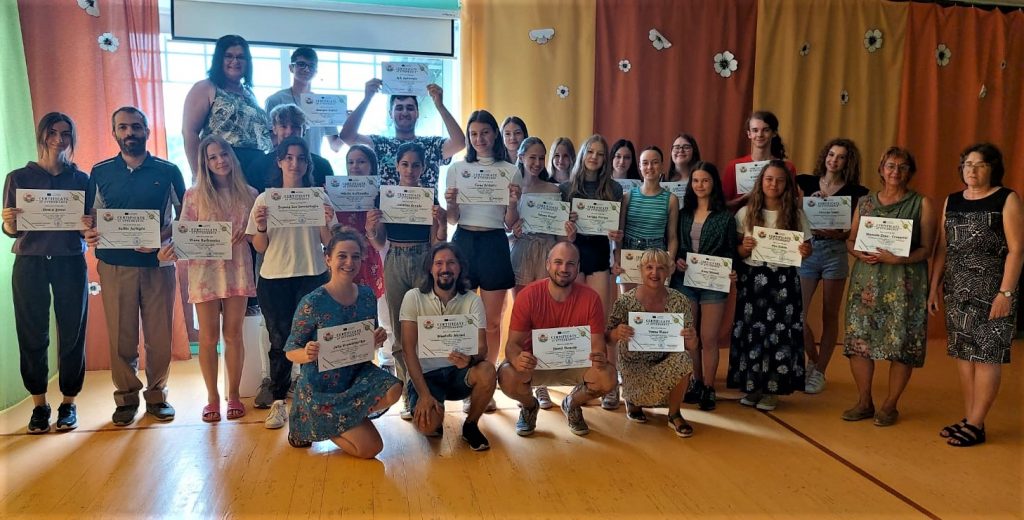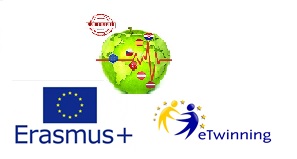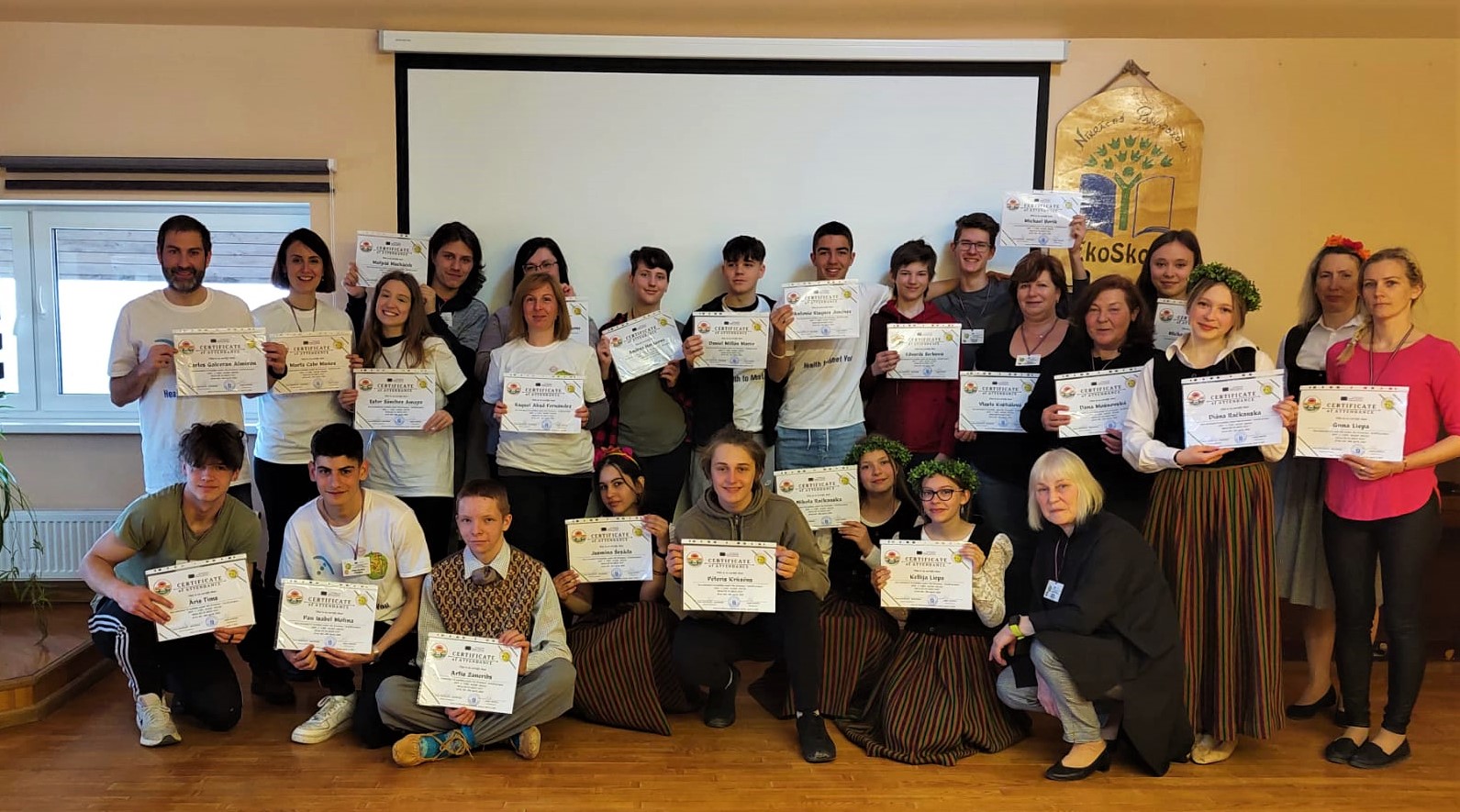
Latvia
2nd short term exchanges of pupils meeting(C4) was in March, 2022 in Nikraces pamatskola’s – 4 pupils and 2 accompanying teachers from each partner school. The date was postponed twice because of covid restrictions and it was complicated a lot to agree on the new date. In this mobility just 2 partners (CR and Spain) could come. The situation was also complicated by the start of Russian aggression in Ukraine. 3 partners (Austria, Turkey and Croatia) participated in extra mobility at the end of June.
Contents:
-Students participated in an ad filming to prevent to reduce tobacco and binge drinking. Students in mixed groups shot their ad during mobility. This ad was accompanied by a slogan. Students of 3 partners shot their ads during the extra mobility. That is the reason why students cannot vote the best ad – after the extra mobility holiday started and nobody was at school because of holiday.
– Each partner by students explained and showed how persuasive language and slogans were analysed and worked during lessons at school.
– Finishing Healthy schools guide: development and elaboration of assessing advertisements dimension.
– 2 hours workshop for students based on prevention actions of bad habits activities.
– Scavenger hunt games for students in local neighbourhood. Adventure hike with instructor for teachers and students.
– Participants in field trips in the host country – Ventspils and Kuldiga: guided tour in the city.
-Following a waterfall management structure , assessing advertising dimension inside the healthy schools guide was developed as follows:
1. Each partner suggested 3 activities to deal with advertising for the guide according to its needs.
2.Each partner tested these activities at schools .
3. The host partner was in charge of writing the section’s introduction and give it final shape. 4.During the mobility, the implementation process was shared and assessed by all partners. There was a verification process implementing some these activities during a training session with students, and a final assessment by teachers and students took place.
5.Each partner organised and be in charge of dissemination actions at schools and locally to ensure the sustainability of the guide. This training programme for students and its result (guide) had a main aim which was to develop our students’ competencies (language skills, initiative, critical thinking, collaboration) and increase their awareness and knowledge on health issues among students, teachers, parents and locals. Each dimension was preceded by an introduction (developed by the host) which contained information about the objectives of the guide section, target groups, trainers, timetable, structure and expected results. The guide was conducted in English. This guide was done collaboratively among partners and publish online on issue.

